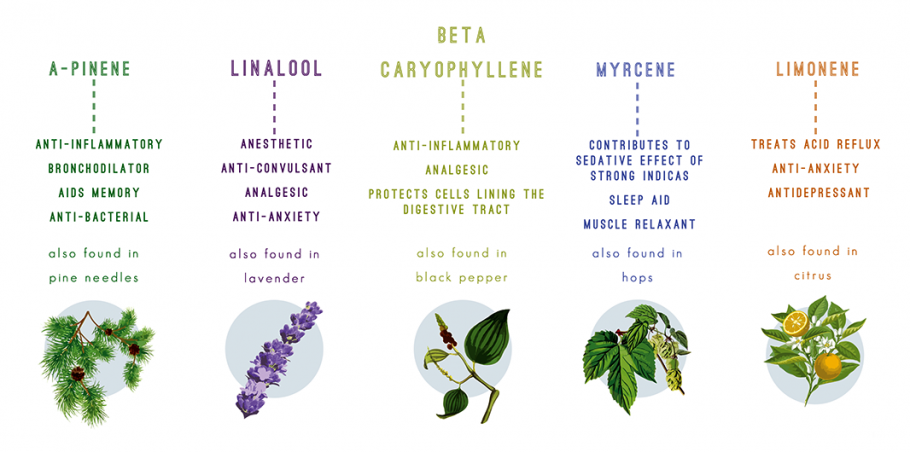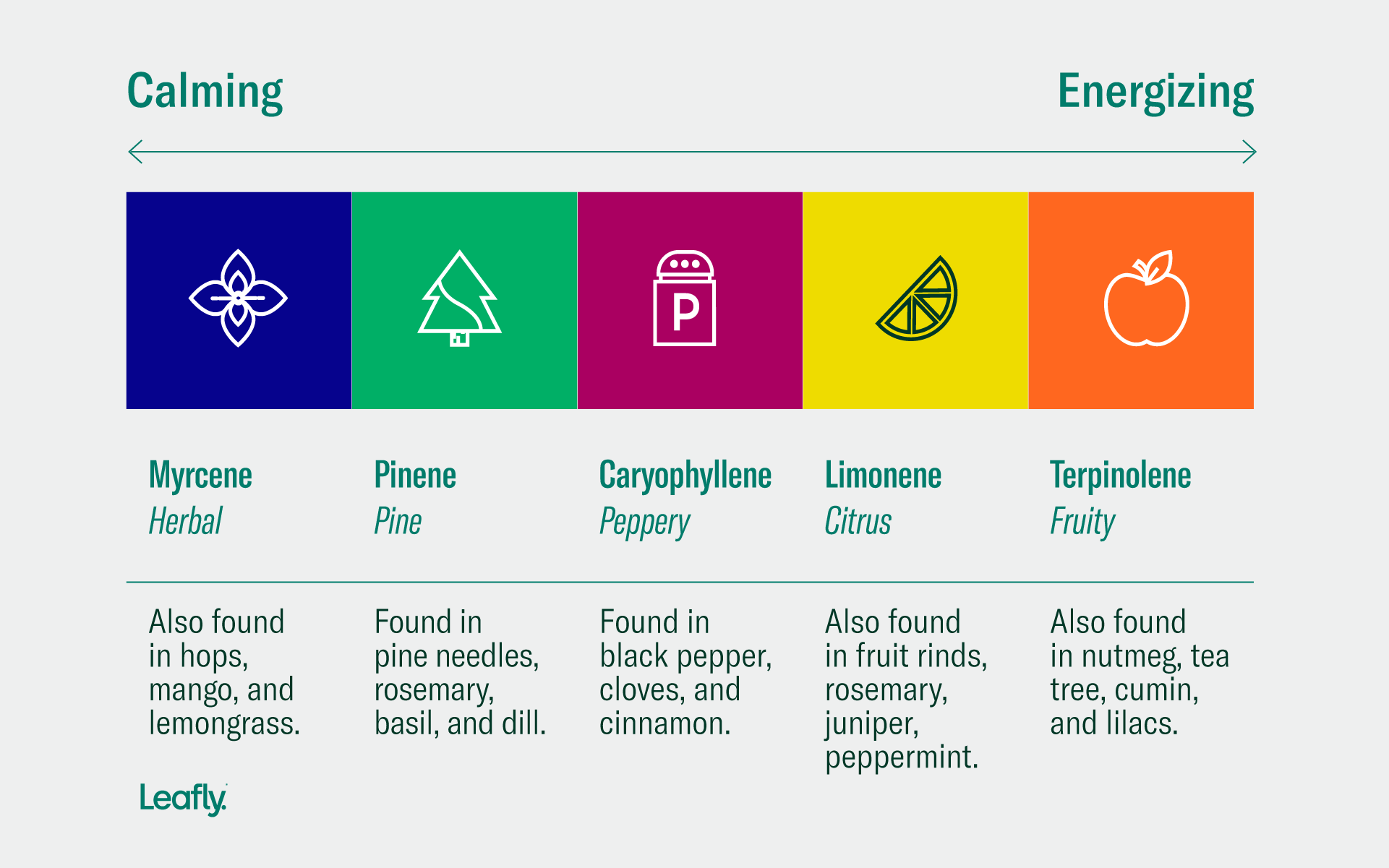There’s just something about the aroma of cannabis that soothes the mind and body.
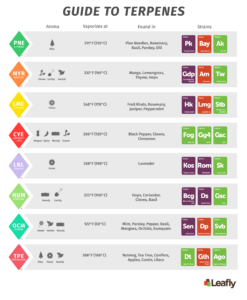
Whether it’s the sweet fruity taste of Pineapple Trainwreck or that skunky smell that bursts from a cracked bud of Sour Diesel, we know there’s something going on under there...under those complex and flavorful bouquets. Terpenes are what you smell, and knowing what they are will deepen your appreciation and respect for cannabis. Help you to interpret the massive number of strains available today and quide you towards your desired flavors and effects.
Terpenes are the element in cannabis that creates the nuanced flavors and scents that draw us to some strains while driving us away from others. Their aromas might transport you to a rose garden or a pine forest, while others will make you feel like you just scrubbed your house with lemon cleaning solutions or stepped in a pile of dog shit (yes, there is in fact a strain named dog shit).
Unfortunately, many breeders and dispensaries don’t advertise the terpene profiles of all cannabis strains, so learning to identify some yourself based on smell can be helpful and remember...the staler and dryer that your herb becomes, the more its terpenes start to disappear, explaining the mild, toned down smell and flavor of older weed that has not been cured or stored properly.
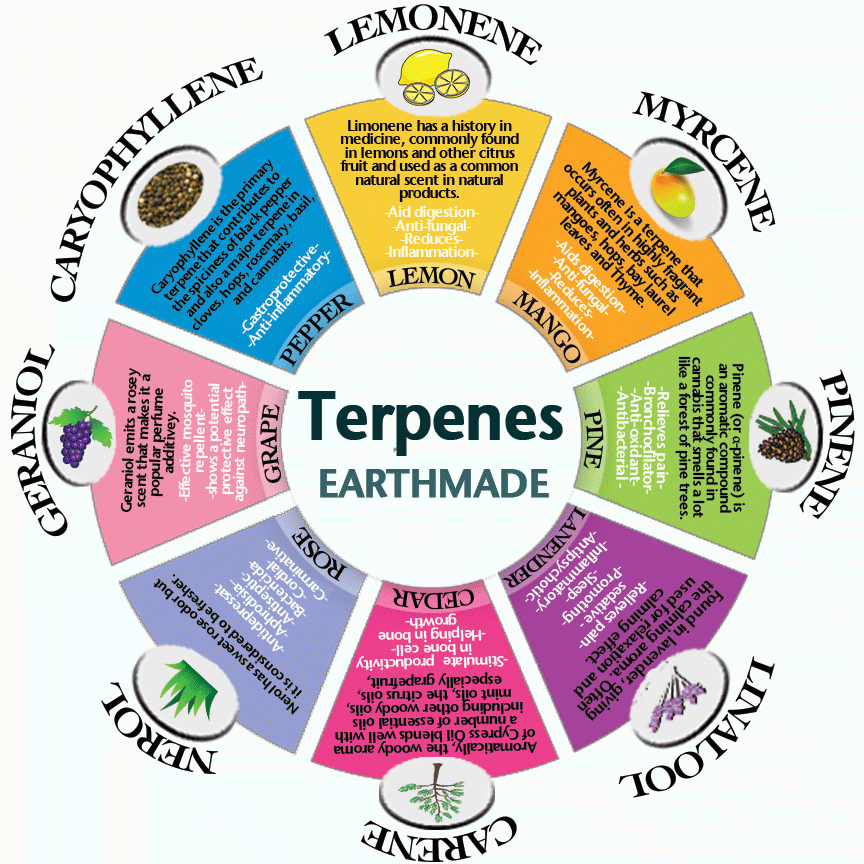
& Here We Go!!
What are cannabis terpenes?
Secreted in the same glands that produce cannabinoids like THC and CBD, terpenes are aromatic oils that color cannabis varieties with distinctive flavors like citrus, berry, mint, and pine.
Terpenes may play a key role in differentiating the effects of various cannabis strains. Some terpenes might promote relaxation and stress-relief, while others potentially promote focus and acuity, but more studies are needed to understand how and to what extent. Terpene molecules seperated from all others are even showing signs of medicinal value all by themselves. But again, only recently have facilities been able to recieve funding for such studies.
Not unlike other strong-smelling plants and flowers, the development of terpenes in cannabis began for adaptive purposes: to repel predators and lure pollinators.
There are many factors that influence a plant’s development of terpenes, including climate, weather, age and maturation, fertilizers, soil type and microbial content, even the time of day.
Over 100 different terpenes have been identified in the cannabis plant, and every strain tends toward a unique terpene type and composition. In other words, a strain like Cheese and its descendants will likely have a discernible cheese-like smell, and Blueberry offspring often inherit the smell of berries and so on.
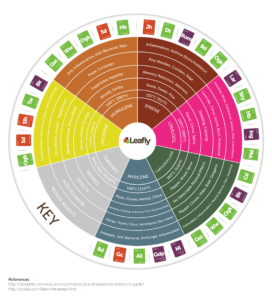
Some terpenes might promote relaxation and stress-relief, while others potentially promote focus and acuity. Myrcene, for example, is found in many relaxing cannabis strains like Blue Dream and Granddaddy Purple. Terpinolene is commonly found in uplifting, active strains like Jack Herer and Ghost Train Haze.
The effect profile of any given terpene may change in the presence of other compounds in a phenomenon known as the entourage effect. More research is needed to understand each terpene’s effect when used in harmony with others. Their differences can be subtle, but terpenes can add great depth to the horticultural art and connoisseurship of cannabis. They may also add therapeutic value to cannabis, based on their unique medicinal properties.
Many cannabis analysis labs now test terpene content, so we can have a better idea of what effects a strain might produce. With their unlimited combinations of potential synergistic effects, terpenes will certainly open up new scientific and medical terrains for cannabis research.
Now... Let's get down -n- terpy
Click on the "Green Link" Terpene below that you would like to know more about
Below are a couple of graphs to help you decide which terp to explore first
